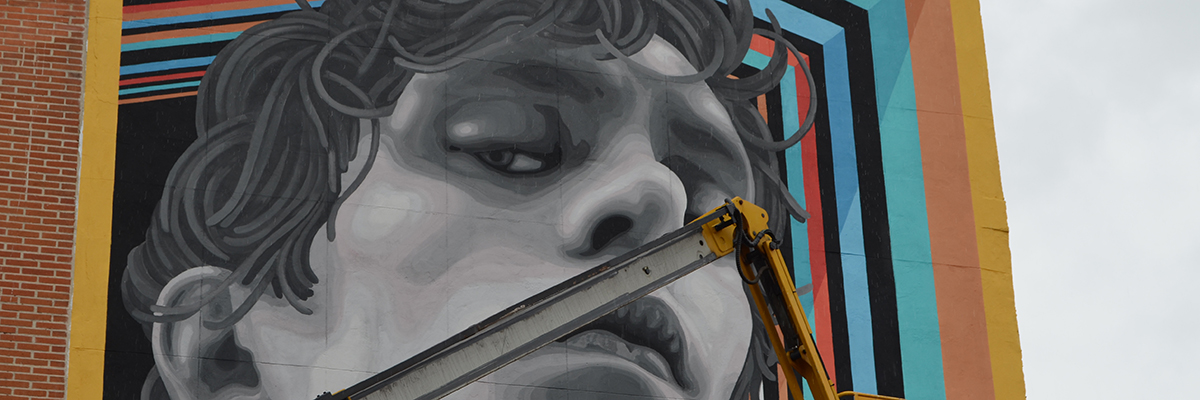Today we speak with Analí Chanquia and Vanesa Galdeano, who are known professionally together as MEDIANERAS. They are originally from Argentina but presently they live in Barcelona; together they have been traveling around the world together for 10 years creating murals. They work as a couple developing a vocabulary of kinetic graphics and androgynous, anamorphosed portraits that are jarring, slickly virtual, and somehow transcendent. Each is of this moment in the environment it is painted, yet reminds us that we are entering a different age of interaction that is not necessarily physical. It is electric, accessible, and oddly, spiritual.
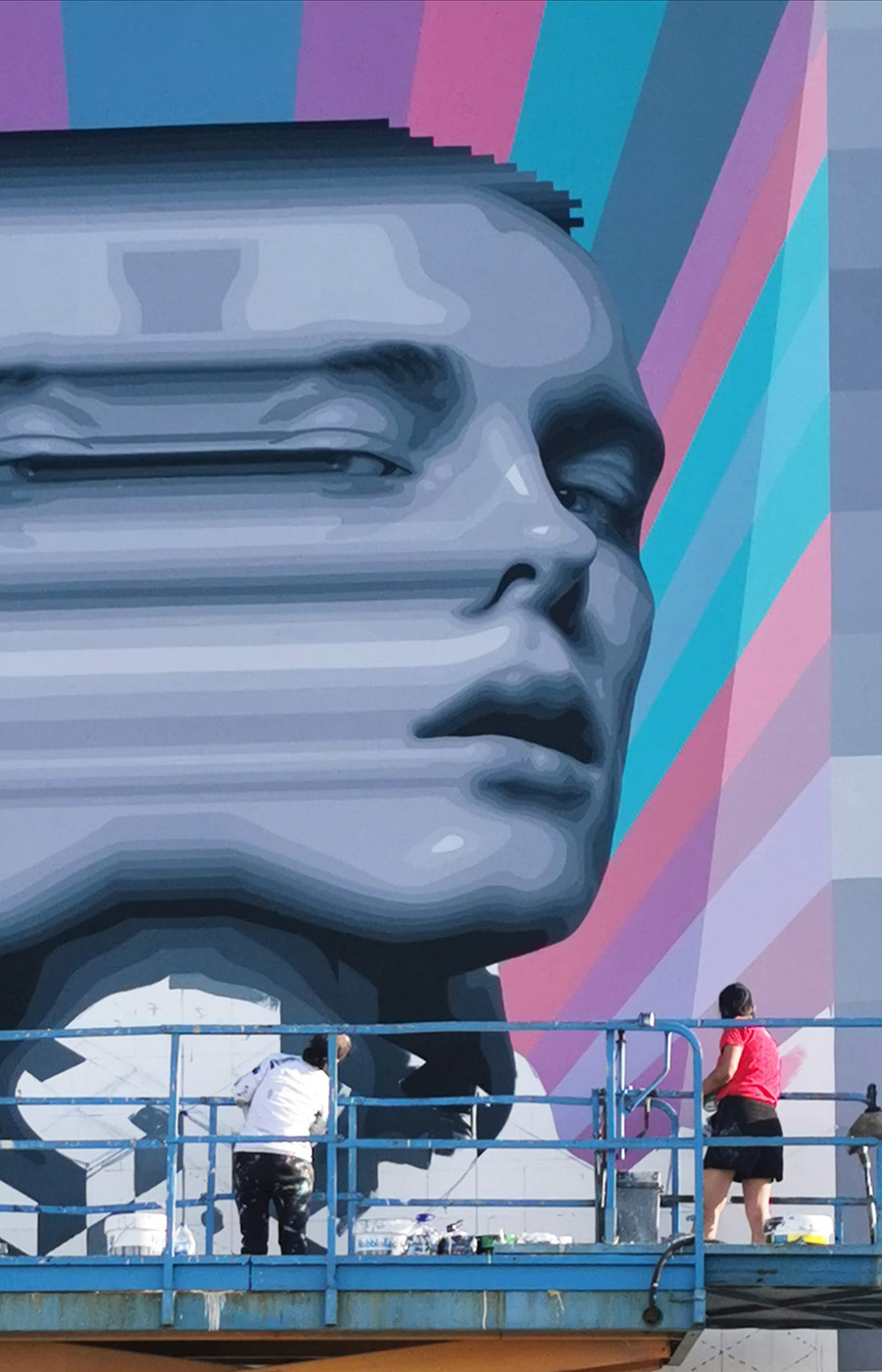
BSA: How many years have you been painting together and where and how did you begin?
Medianeras: We have been painting together for about 10 years. Both Vane and I (Anali) were already dedicated to making works of urban art before founding MEDIANERAS. Vanesa is an architect and has directed a mosaic workshop in the city of Rosario since 2009, a workshop with which they carried out collective mosaic interventions around the city. More than 15 interventions can be found; some are murals others are urban furniture cladding, such as stairs or public benches. In my case, I painted my first mural at the age of 18, but I began to dedicate myself more specifically to urban painting around the year 2011 when I did my Fine Arts thesis. This was a theoretical-practical project called “artist looks for a wall “, which consisted of making murals on walls that the neighbors offered me when they found this stencil that I left as a signature on each work.
We met in 2012 at a mosaic street workshop in the city of Rosario. Vanesa, who at that time was directing the workshop, contacted several graffiti artists to make a collective artwork of mixed techniques. That’s how we met; we began a life of love, travel, and art together. Until today we continue to grow together and enjoy together what we like the most.
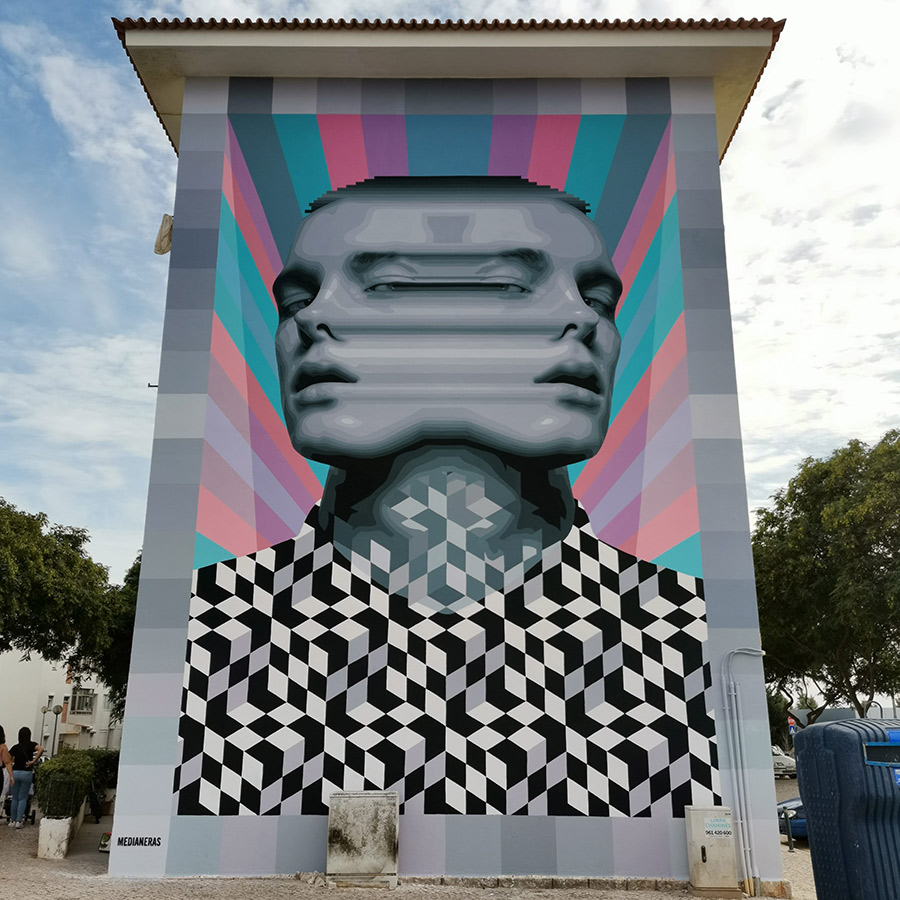
BSA: Medianeras is your artistic name. Could you please tell us about it? How did you arrive at naming yourselves “Medianeras”
Medianeras: We are a couple in both life and art, and thus our day-to-day existence and our projects capture our mutual growth. We called our duo Medianeras because we cherish the concept and idea of sharing. In Spanish, this means ‘lateral walls,’ which are those shared by neighbors. There’s a difference between walls whose function is to separate spaces, and lateral ones, which, conversely, join them. We maintain that public art, aside from making cities more attractive, proclaims the idea of a place shared by all the individuals who pass through it. We teamed up with the idea of conceiving and creating public art together. At present we are dedicating ourselves to mural painting, but we have also worked on collective mosaic interventions in public spaces.
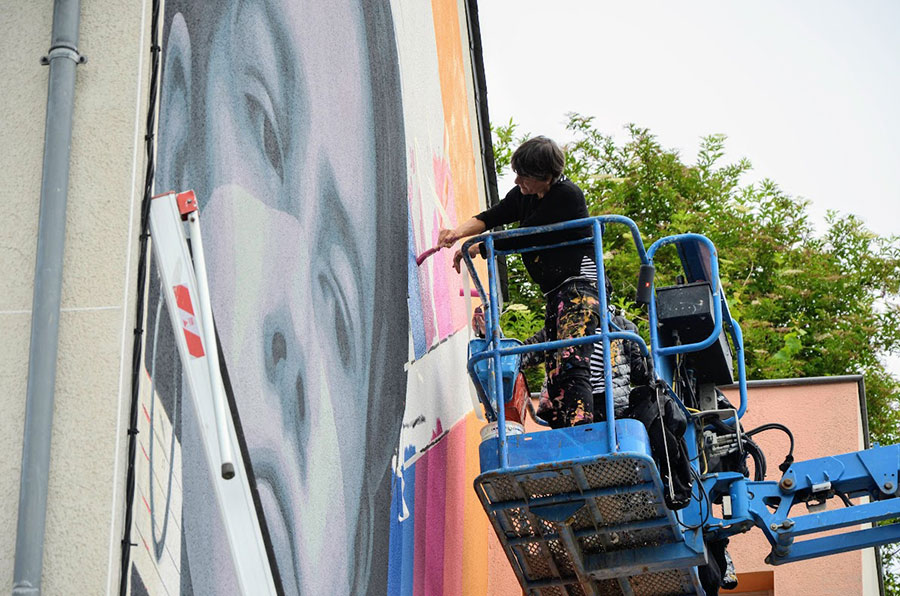
BSA: Please tell us about your process for creating a mural from the idea to the sketch to the art on the wall.
Medianeras: The creative process is quite long. The idea that we are going to paint takes us more time than the days of painting the mural. We study the place a lot, the points of view, the architecture, and the surroundings; we take into account the culture of the place and the history. We draw the designs digitally, based on the photographs of the wall and its proportions and features.
The ideas to create the projects come mainly from certain characteristics of the town or city, the context, the proportions of the wall – width – height – unevenness – and the possible points of view. We mainly represent portraits, and we try not to necessarily define the gender of who we represent, giving rise to the viewer’s perspectives. The murals that we create considerably modify the urban space. In the case of the paintings that we make, they open a kind of window to artistic representation. However, it is important to remember that despite the fact that these murals are visually imposed, they are still ephemeral interventions in painting, linked to possible changes in the weather or any other.
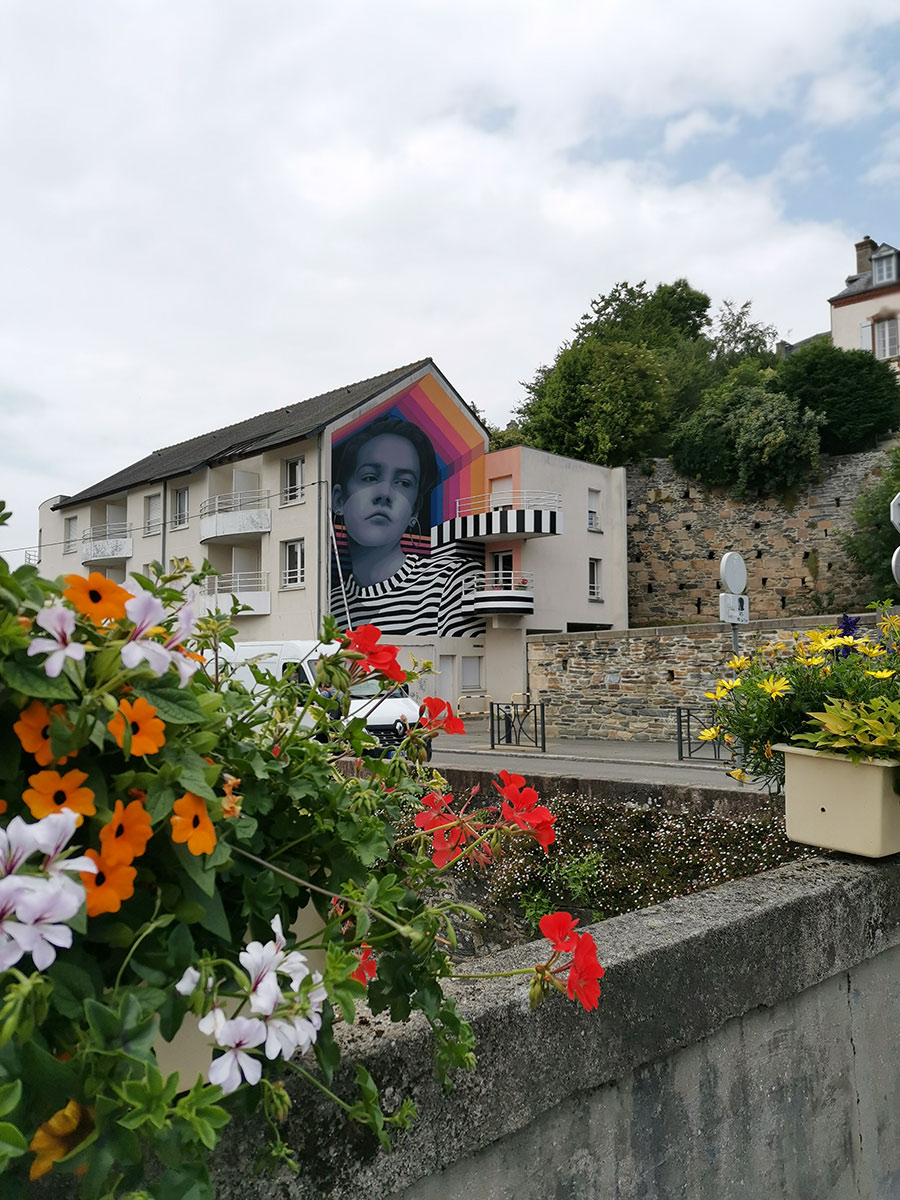
BSA: Please tell us about your background in art and what you were doing independently before you formed Medianeras.
Medianeras: As a child, I (Anali) loved creating things, drawing, and inventing new objects. I attended different art workshops and studied at the University of Arts in the city of Rosario. While I was studying, I made several murals, and in the last years of my career, I was already doing all the artwork on the street. I also studied digital design, a fact that allowed me to handle 3d tools and have a solid idea about space representation.
Vanesa studied architecture and also fine arts. She always had a predilection for urbanism in general but began to carry out collective urban interventions through a mosaic workshop that she directed after finishing architecture
We are both from Argentina. We grew up in a city named Rosario which is located near the Paraná river. Our country, located in South America, is incredible and beautiful as well as uncertain, unstable, and unpredictable. This makes its inhabitants constantly adapt to different types of changes, whether these changes are economic, political, social, or otherwise. In my opinion, in general, it makes Argentine citizens quite creative in the face of different types of difficulties. We are a society that is accustomed to improvising and adapting quickly.
In relation to our activity, Street art is characterized by appearing in all its forms in various parts of the city in a somewhat uncontrolled and deregulated way. The techniques that are used are those that are at hand depending on the stage that the country goes through. For example, the colors and spray brands that can be found in Rosario are very limited, and that makes the artists or graffiti artists use only the colors that they can find or even mix between the same cans of spray they have. In turn, the high costs of spray paint often lead to the choice of cheaper paints, often acrylic paints or even a mixture of several.
In Argentina, there are fewer formalities to intervene in the public space, and this has resulted in a somewhat more spontaneous, less regulated, more experimental urban art, perhaps even more sloppy. However many times we lack the necessary materials or budgets to make murals of large formats.
Although it is an activity that is penalized, we could venture that as there are problems of another kind, more urgent and important, urban art remains somewhat more out of the main focus. In this sense, we appreciate that freedom of expression is not expressly controlled, often allowing experimentation and growth of various artists on the street. We grew up in this context, where through dialogue with neighbors in our beginnings we were able to carry out our works. It can be said that we learned to paint on the street itself.
There was always something that called both of us to create public art. We even met each other working on the Street. The objective that we always shared was to make street art for everyone, whether in mural format, urban intervention, or mosaic because we believe that it is the right place for MEDIANERAS. We consider that public art is the most honest way to create our artworks and that anyone has access to them. It is art for everyone. Medianeras was born with a shared desire to move and create our artworks in different places and for everybody.
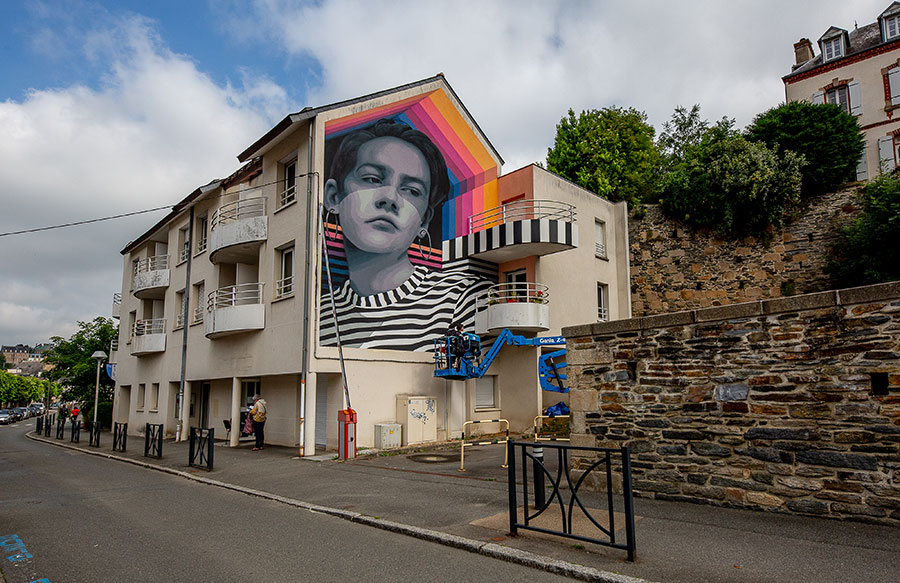
BSA: The moment you paint on a wall on a building you’re immediately transforming the building and how the building is perceived by the people on the ground. How do the possibility of doing an intervention on any given building inform the theme and the execution of your work?
Medianeras: Our murals center on the representation of gender in its vast diversity. Although the works vary according to where they are located and how they are viewed, one of their standard features is faces whose gender is not necessarily distinct. Our theme corresponds closely to our way of thinking about gender. Throughout our education, we are taught what a man does and what a woman ought to do. However, in both our case as well as that of a broad range of human beings, gender is something that can change and be unable to adapt to this binary imposition. We want our works to convey the message of a broad concept of gender. We believe that once the rigorous distinction between men and women comes to an end, we will see the development of freer social relations and generations of people who are less concerned with what they should be and more attentive to what they could be.
In other words, we believe that by breaking these rigid and constrictive molds, we can overcome certain forms of discrimination, as well as roles imposed on us from the outside. Our works reflect individuals, poetically and visually transformed, who often struggle to break out of the molds in which they find themselves.
These molds are the architectures where they are found. That is why we like to make holes in the spaces, like breaking down the walls.
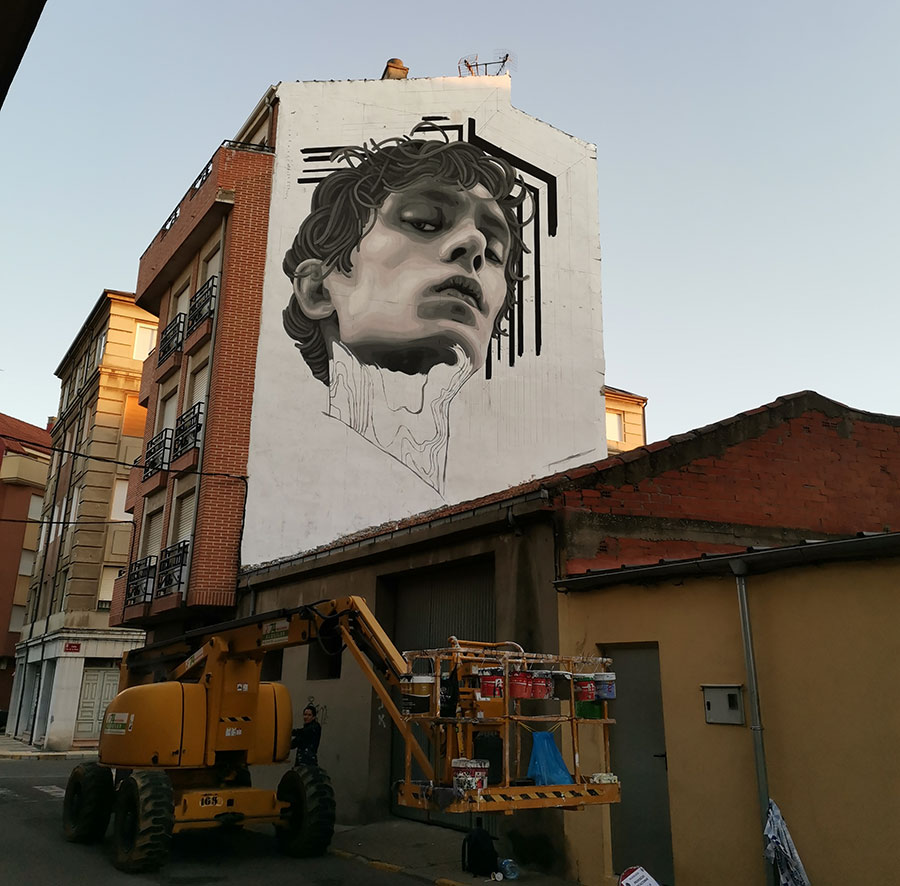
BSA: How do you view context when doing a mural? The context here includes not only the architectural structure that you are using as canvas but also the neighborhood where the said structure is located, as well as the city and indeed the country.
Medianeras: Before starting a design we try to inform ourselves as much as we can about society and the place such as the wall where we are going to paint the mural. In this research, we investigate the customs and characteristics of the culture and its history. We also make a virtual tour of the areas where the wall is located through google maps. This tool allows us to obtain some possible perspectives of the place. With a set of data that includes colors of the environment, the architecture of the place, or even stories, among many others, we create a sketch that is adjusted specifically for that particular surface (wall). That sketch can only be represented on that site since we think about it in relation to the architecture and the points of view from which it will be observed. Through our representations of diverse individuals, we convey an idea of inclusion and conviction about the ideals we stand for.

BSA: You are not afraid of color and geometry in your work. Your murals have almost a tri-dimensional depth, is this technique informed by your previous experiences in art making or was it born out from merging your talents together?
Medianeras: Both. We have enough knowledge to be able to bring to painting what we projected in the initial idea. Through the years, we have combined our styles in such a way as to arrive at what we currently do. Each project is a new challenge to integrate portraits into architectures, which are different in each case. We believe that we can achieve great complexities in the representation of depth thanks to the unification of our knowledge, both geometry and color and drawing.
We like to use the technique of anamorphosis. From one angle, one sees images of faces while, from another, one sees the distortion of these faces—the images reveal that they are illusions, something we believe is real, but that is not necessarily so. This is why we study the area around as well as the points of view from which the wall will be perceived: the image is conditioned both by the wall on which it will be displayed and the environment it is in.
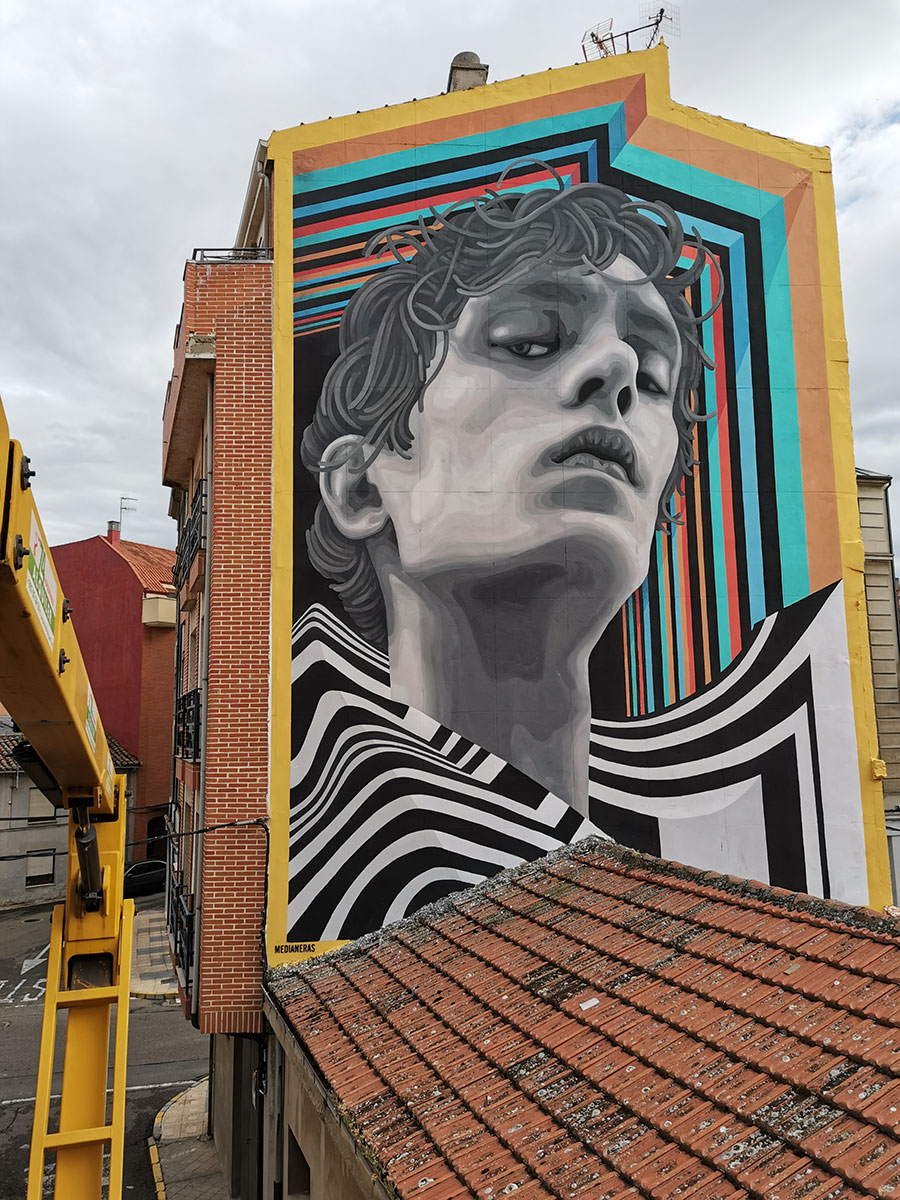
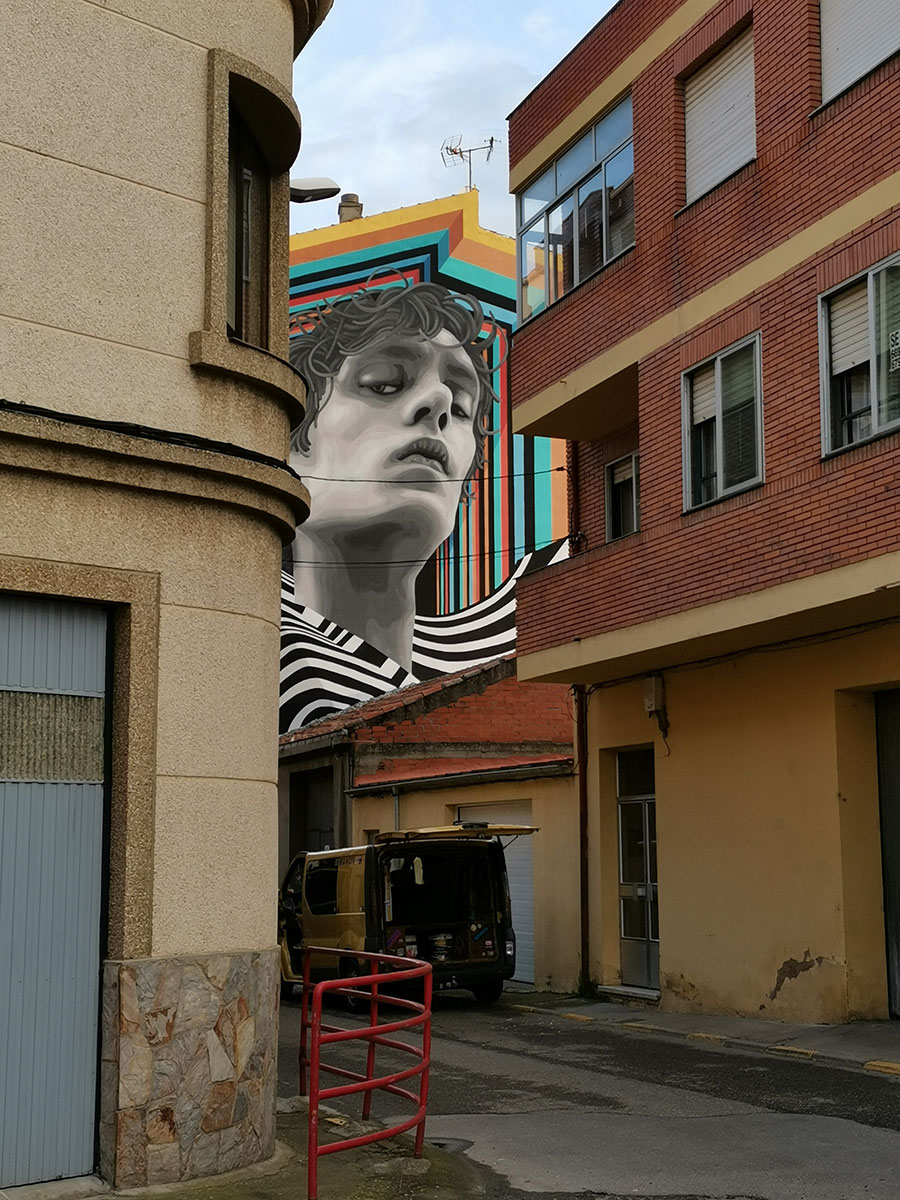
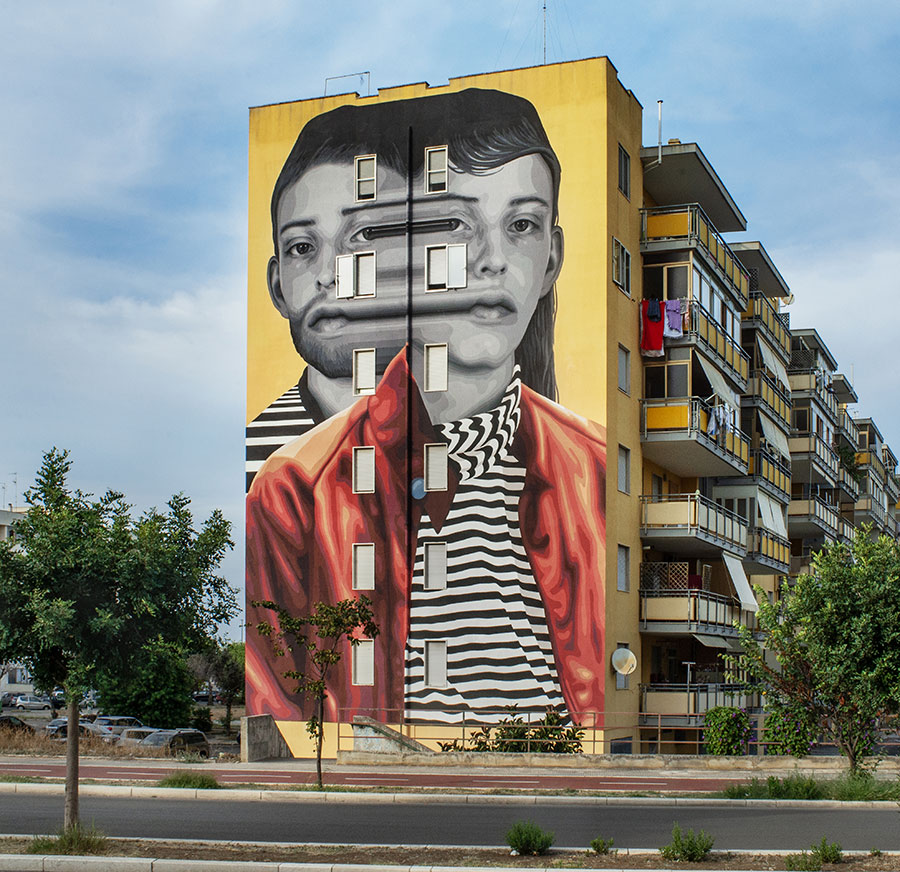
Other Articles You May Like from BSA:
Google Maps does a pretty good job at simply documenting streets. These professionals and others like them know how to discern, interpret and present the work of Street Artists in ways that can add co...
Kristina Borhes & Nazar Tymoshchuk at MZM Projects bring us an exemplary profile of the French public art/street artist/fine artist Eltono. A former graffiti writer and semi-professional lounger,...
Welcome to BSA Images of the Week. Can you feel the power of July’s full Buck Moon that arrived this weekend? Not to be confused with the full buck-naked moon; those are the guys climbing the...
Marathon Day in NYC today with people running in the streets more than usual, the time clock moved back an hour today, mid-term elections are this Tuesday, and New York's first ebola patient is fe...
New York Street Art watchers over the last three or four years have been familiar with the polished irony and gentle sarcasm that Enzo & Nio purvey on often appropriately chosen walls, lamp posts,...
 BROOKLYN STREET ART LOVES YOU MORE EVERY DAY
BROOKLYN STREET ART LOVES YOU MORE EVERY DAY